Introduction: The Art of Stir-Frying and the Magic of Eggplant
In the vast realm of culinary arts, stir-frying stands as a testament to the harmony of heat, seasoning, and ingredient selection. This cooking technique, originating from the kitchens of China, has since traveled across borders, captivating food enthusiasts worldwide with its ability to preserve the freshness, color, and texture of vegetables while infusing them with rich, savory flavors. Among the myriad of vegetables that benefit from this cooking method, eggplant (Solanum melongena), also known as brinjal or aubergine, holds a special place. Its meaty texture, mild flavor, and ability to absorb flavors make it an ideal candidate for stir-frying, especially when done in a wok—a traditional Chinese cooking utensil known for its ability to distribute heat evenly and efficiently.
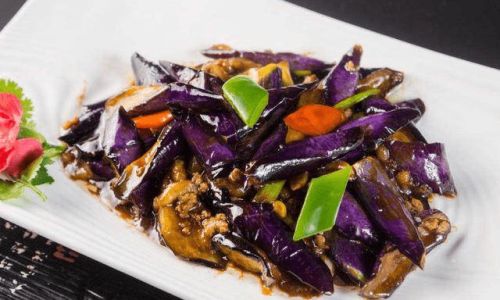
In this article, we embark on a culinary journey, exploring the intricacies of stir-frying eggplant in a wok. From selecting the perfect eggplant to mastering the cooking process, we will delve into the science and art behind this dish, uncovering its historical significance, nutritional benefits, and the myriad of variations that can be created to suit diverse palates.
Chapter 1: The Essence of Stir-Frying
Stir-frying is a rapid cooking method that involves frying small pieces of food in a small amount of hot oil over high heat in a wok or a large, flat-bottomed pan. The key to successful stir-frying lies in the combination of high heat, rapid movement, and minimal oil usage. This technique not only ensures that the food cooks evenly and quickly but also retains its natural juices, vitamins, and minerals, making it a healthier alternative to deep-frying.
The wok, with its rounded bottom and wide surface area, plays a crucial role in this process. Its design allows for maximum heat retention and even distribution, creating an optimal cooking environment. When heated to the right temperature, the wok’s surface becomes non-stick, further reducing the need for excessive oil.
Chapter 2: The Versatile World of Eggplant
Eggplant, a member of the nightshade family, is a versatile vegetable that can be used in a multitude of dishes across various cuisines. Its fleshy, sponge-like texture makes it highly absorbent, allowing it to soak up the flavors of the spices, sauces, and oils it is cooked with. Depending on the variety, eggplant can range from deep purple to green, white, or even striped, each offering a slightly different taste and texture.
Nutritionally, eggplant is a low-calorie, high-fiber food that is rich in antioxidants, vitamins, and minerals. It contains nasunin, a powerful antioxidant that helps protect cell membranes from damage, and chlorogenic acid, which may aid in weight management and blood sugar regulation. Furthermore, its high water content and fiber make it an excellent choice for maintaining hydration and digestive health.
Chapter 3: Preparing the Perfect Stir-Fry
Selecting the Eggplant:
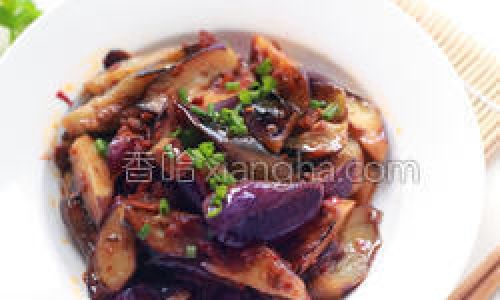
The first step in creating a delicious stir-fried eggplant dish is selecting the right eggplant. Look for firm, glossy, and evenly colored eggplants with smooth, unblemished skin. Avoid those that are soft, wrinkled, or have spots, as they may be overripe or starting to spoil.
Preparing the Ingredients:
Once you have your eggplant, wash it thoroughly under running water and pat it dry using a clean kitchen towel. Cut the eggplant into bite-sized pieces or strips, depending on your preference. To prevent the eggplant from absorbing too much oil and becoming soggy, you can sprinkle it with a little salt and let it sit for about 15 minutes. This will draw out excess moisture. Afterward, pat the pieces dry again using paper towels.
Gathering the Aromatics and Seasonings:
Stir-frying eggplant is not just about the vegetable itself; the aromatics and seasonings used play a vital role in enhancing its flavor. Common ingredients include garlic, ginger, scallions, and chili peppers. For seasoning, soy sauce, oyster sauce, sesame oil, and a pinch of sugar are often used to create a balanced, savory-sweet taste.
Heating the Wok:
Before adding any oil, preheat your wok over high heat until it is very hot. This ensures that the oil reaches the right temperature quickly, creating an ideal cooking surface that prevents sticking and promotes even browning.
Adding the Oil and Aromatics:
Once the wok is hot, add a small amount of oil (vegetable, peanut, or sesame oil are all good choices). Swirl the oil around to coat the entire surface of the wok. Then, add your chopped aromatics—garlic, ginger, and chili peppers—and stir-fry them until fragrant, but be careful not to burn them.
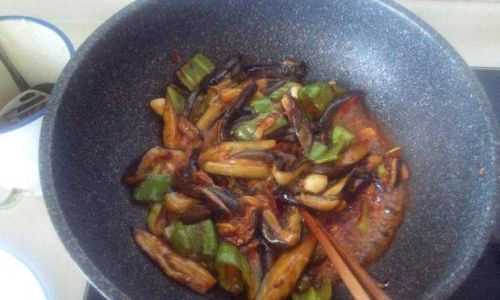
Stir-Frying the Eggplant:
Add the prepared eggplant pieces to the wok, spreading them out in a single layer. Stir-fry them continuously, using a spatula or wok ladle to toss and turn the pieces, ensuring they cook evenly. The high heat will cause the eggplant to caramelize, developing a delicious, slightly crispy exterior while keeping the interior tender and juicy.
Seasoning and Finishing:
After the eggplant has turned a nice golden brown, add your seasonings—soy sauce, oyster sauce, and a pinch of sugar. Continue to stir-fry for another minute or two, allowing the flavors to meld together. If you like, you can finish the dish with a drizzle of sesame oil and a sprinkle of chopped scallions or fresh herbs like cilantro for added freshness.
Chapter 4: Variations and Innovations
Stir-fried eggplant is a blank canvas that can be adorned with countless variations, catering to diverse tastes and dietary preferences. Here are a few ideas to inspire your culinary creativity:
-
Meat or Tofu Addition: For a heartier dish, you can add strips of pork, chicken, beef, or tofu along with the eggplant. This not only boosts the protein content but also adds another layer of flavor.
-
Vegetable Medley: Stir-fry a mix of vegetables along with the eggplant, such as bell peppers, carrots, baby corn, and snap peas, to create a colorful, nutritious medley.
-
Sauce Variations: Experiment with different sauces, such as hoisin sauce, black bean sauce, or a spicy chili sauce, to give your stir-fried eggplant a unique twist.

-
Garnishes: Enhance the presentation and flavor of your dish with garnishes like toasted sesame seeds, chopped peanuts, or crispy fried shallots.
-
Dietary Adaptations: For a vegan or vegetarian version, ensure that all ingredients and seasonings are plant-based. Additionally, you can reduce the oil content by using a water-based stir-fry method, where a small amount of water is added to the wok instead of oil, creating a steam-fry effect.
Chapter 5: The Cultural Significance of Stir-Fried Eggplant
Stir-fried eggplant holds a special place in many cultural cuisines, reflecting the diverse ways in which people around the world have adapted and enjoyed this versatile vegetable. In Chinese cuisine, it is often served as a side dish or part of a larger stir-fry medley, symbolizing prosperity and abundance due to its purple hue, which resembles the color of royalty. In Indian cuisine, eggplant-based dishes like baingan bharta are beloved for their rich, smoky flavors, often served with bread or rice.
Beyond its culinary value, stir-fried eggplant also embodies the spirit of innovation and adaptability. Its ability to absorb and blend with various ingredients and flavors makes it a perfect canvas for culinary experimentation, allowing chefs and home cooks to create dishes that are both traditional and modern, familiar and novel.
Conclusion: Stir-Frying Eggplant in a Wok – A Culinary Journey
Stir-frying eggplant in a wok is not merely a cooking technique; it is a culinary journey that takes us through the realms of flavor, texture, and nutrition. By mastering the art of stir-frying and understanding the unique properties of eggplant, we can create dishes that are not only delicious but also nutritious and visually appealing. Whether you are a seasoned chef or a home cook eager to experiment, the world of stir-fried eggplant awaits, offering endless possibilities for creativity and enjoyment.
As you embark on your own culinary adventure, remember that the key to success lies in attention to detail, patience, and a willingness to explore. With each stir of the wok, you are not just cooking a meal; you are nurturing a tradition, celebrating diversity, and honoring the simple, yet profound, joy of sharing a well-prepared meal with those you love. So, gather your ingredients, heat your wok, and let the magic of stir-fried eggplant begin.


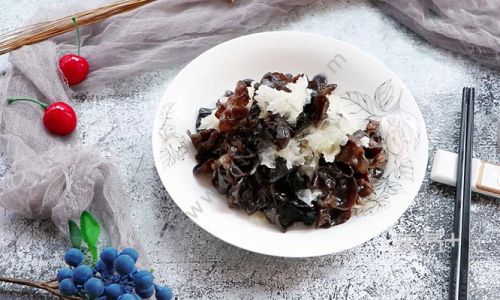

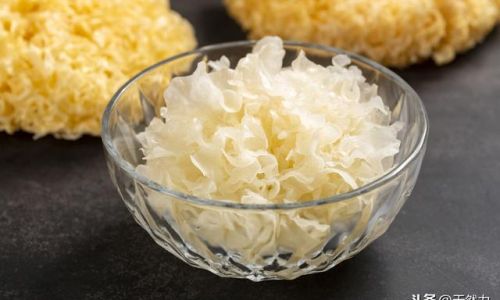
0 comments